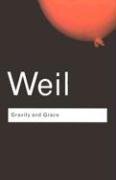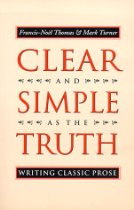A Self Made of Words
by Carl H. Klaus
Iowa, 2013
Recently a Buddhist acquaintance suggested I read Simone Weil because of her work on attention. She writes, for example, that “Absolute undivided attention is prayer,” which lends a Buddhist flavor to her Judeo-Christian theology.
Attention can be aimed at anything, after all, not necessarily a god, but a lover, a cat, a tree. How does undivided attention constitute prayer? By establishing us fully in the present moment, where Buddhists also locate the truth.
As I headed to the bookshelf to take down Weil’s “Gravity and Grace” I crossed my foyer and found an envelope from The University of Iowa Press. Inside was a freshly published little book, “A Self Made of Words” by Carl H. Klaus, the founder of Iowa’s nonfiction program.
Suddenly I had two books in my hands, and immediately Simone Weil and Carl Klaus were in argument.
Klaus wrote “A Self Made of Words” to help writers of nonfiction craft a distinct version of themselves, a persona, on the page:
“It’s best to take charge of how you come across in your prose so that you create an engaging impression, rather than letting your written self take shape haphazardly in a form, style, or voice that might misrepresent you or turn off your readers. To help you avoid that risk and create a distinctive self, I’ve focused on the most important way of projecting your self in nonfiction prose—by means of a ‘persona,’ which is a version of yourself made of words, a carefully crafted version that you can vary as you see fit. Confident or fretful, solemn or sassy, tough or tender, casual or formal….”
Simone Weil wants nothing to do with any of that. She sees writing as a fusion of honesty and attention. Trying to craft a persona in one’s writing, trying to leave an impression, she argues, is a distraction, an infidelity, a departure from the clarity that should exist between writing and the thought it conveys:
 “In the operation of writing, the hand which holds the pen, and the body and soul which are attached to it, with all their social environment, are things of infinitesimal importance for those who love the truth. They are infinitely small in the order of nothingness. That at any rate is the measure of importance I attach in this operation not only to my own personality but to yours and to that of any other writer I respect.”
“In the operation of writing, the hand which holds the pen, and the body and soul which are attached to it, with all their social environment, are things of infinitesimal importance for those who love the truth. They are infinitely small in the order of nothingness. That at any rate is the measure of importance I attach in this operation not only to my own personality but to yours and to that of any other writer I respect.”
Weil concerns herself only with the personalities of “those whom I more or less despise,” because their nonfiction is polluted with persona.
It’s important to Weil’s argument that she loves truth. For her, writing is trying to tell the truth. That should matter equally to Klaus, because whether or not we believe in truth, when we write nonfiction we posit a truth and we vow fidelity to it.
For Weil, the hazard in writing is including anything (like, say, a persona) that clouds the glass between the reader and the truth.
“The effort of expression has a bearing not only on the form but on the thought and on the whole inner being. So long as bare simplicity of expression is not attained, the thought has not touched nor even come near to true greatness…
“The real way of writing is to write as we translate. When we translate a text written in some foreign language, we do not seek to add anything to it; on the contrary we are scrupulously careful not to add anything to it. That is how we have to translate a text which is not written down.”
Weil’s aspiration to “bare simplicity of expression” reminded me of another book on my shelf: “Clear and Simple as the Truth,” by Frances-Noël Thomas and Mark Turner.
Thomas and Turner define Weil’s approach as “the classic style.”
“Classic style is in its own view clear and simple as the truth,” they write. “It adopts the stance that its purpose is presentation; its motive is disinterested truth. Successful presentation consists of aligning language with truth, and the test of this alignment is clarity and simplicity.”
Thomas and Turner seem to give Klaus an exit from his argument with Weil. Oh, she’s talking about the classic style, Klaus might say, which is but one of many styles, and he has left room for writers like her.
“It’s always important to consider the level of style that you intend to use,” Klaus writes, “in order to make sure that you come across in a way that’s appropriate to the audience, subject matter and purpose of your work.”
But “A Self Made of Words” doesn’t describe a classic style that swears fidelity to truth. Klaus reduces style to three options: formal, informal, and colloquial.
Thomas and Turner contrast classic style to four others: contemplative, Romantic, prophetic, and oratorial, which may infuse prose with interpretation, sensation, emotion, divination, persuasion, or musicality.
Neither of these lists can be complete, because there are as many approaches to writing as occasions to write. But we might divine from Klaus and Thomas and Turner that Weil’s approach may not always be adequate to the job.
 “Classic style is inadequate,” Thomas and Turner write. “No writer can maintain for long the discipline needed to transcend personal interests and personal situations, (and) there is in fact no way at all even for the briefest space to know truth or the existence of truth independent of thought. All conceptions of thought and all supposedly true concepts are exactly that—conceptions and concepts.”
“Classic style is inadequate,” Thomas and Turner write. “No writer can maintain for long the discipline needed to transcend personal interests and personal situations, (and) there is in fact no way at all even for the briefest space to know truth or the existence of truth independent of thought. All conceptions of thought and all supposedly true concepts are exactly that—conceptions and concepts.”
Conceptions and concepts matter a lot to Thomas and Turner, because they believe writing can only be performed—and taught—with attention to its conceptual basis:
“A style is defined by its conceptual stand on truth, presentation, writer, reader, thought, language, and their relationships.”
For example, when Simone Weil says “so long as bare simplicity of expression is not attained, the thought has not touched nor even come near to true greatness,” she defines her stand on truth, presentation, writer, reader, thought, language, and their relationships, and that stand will determine how she writes.
When we depart from the classic style, our conceptual stand must shift as well, according to Thomas and Turner. To write persuasively, seductively, interpretively, we must abandon a theology like Weil’s and adopt a conceptual relationship to truth, to reader, to language, that allows our writing to embody those new intentions. And that conceptual stand will likewise inform each choice we make as we write.
But that’s not how schools teach writing these days, Thomas and Turner lament: “Why is American prose as bad as it is, even though we have more writing programs than ever?”
Because they emphasize writing skills, and: “Any attempt to teach writing by teaching writing skills detached from underlying conceptual issues is doomed.”
So Thomas and Turner do offer Klaus an escape from his argument with Weil, but they have thrown down a gauntlet there. You can depart from the classic style, you can teach students to write a “persona,” if you first teach them to take a conceptual stand.
In a simple way, Klaus does urge his nonfiction writers to consider something like the conceptual stand. In a chapter titled “Concept, Purpose and Persona,” he compares three passages by Benjamin Franklin. One is plain and personal, one authoritarian and aphoristic, one objective and descriptive—and each written for a different purpose.
“So the content, point of view, and style of each passage project a different self created by Franklin to meet a complex set of circumstances existing as much outside him as within him,” Klaus writes.
As if anticipating the poke in the eye coming from Simone Weil, Klaus immediately defends himself and Franklin:
“If changing styles and stances seem to compromise a writer’s integrity, consider the folly of ignoring such adaptive behavior—imagine Franklin writing about the Indians in the personal mode of his autobiography. It would be as inappropriate as attending a public meeting in a bathrobe.”
Klaus has written a tidy little book, about 80 pages, in the slim tradition of that succinct writing classic, Strunk & White’s “Elements of Style.”
The genius of Strunk & White, according to Thomas and Turner, is that it seems capable of solving with ease the immense problems of student writers who have to turn blank screens into successful papers. Thomas and Turner praise the “psychological insight” of Strunk & White’s reassuring cheer, but as a guide to writing, they say, “being little more than an apparently arbitrary mixture of grammatical digest, handy list of common mistakes, and expert hand-holding, it’s drastically incomplete.”
Nonetheless, every writer of books on writing wants to inherit that slim space on the bookshelf. And not without reason. Students use Strunk & White. Thomas and Turner have written a dense, intelligent guide to classic prose that doubtless gets picked up less often.
If there’s a danger to Klaus’s little book, it’s that students may thumb through it with same cheerful ease they bring to Strunk & White, failing to absorb the kind of conceptual commitment that Thomas and Turner urge upon them.
They might fast forward to one of Klaus’s brief chapters on skills—like, say, “Little Words,” which informs them: “Once you get the hang of it, you might find it a pleasure to see how nimbly you can avoid the big words and still get your story or point across.”
And therein balances the gravity and grace of this latest little book on writing nonfiction. We don’t want students, or writers generally, polluting prose with persona. There is room for persona in a minimal space divorced from Weil’s purity only by the necessity of the writer’s conceptual stand.
I could see using “A Self Made of Words” in a classroom, but I wouldn’t send students to it without a guide, a teacher who has appreciated the arguments of Weil and Thomas and Turner.
And I wouldn’t send anyone to it who has grown weary, for whatever reason, of any fabric that further insulates reader or writer from truth.
Such readers will want to focus their undivided attention on writers of the classic style, like Simone Weil.
“Writing is like giving birth: we cannot help but make the supreme effort,” Weil writes. “I need have no fear of not making the supreme effort–provided only that I am honest with myself and I pay attention.”
Jeff McMahon teaches varieties of nonfiction at the University of Chicago. He is the editor of Contrary.

